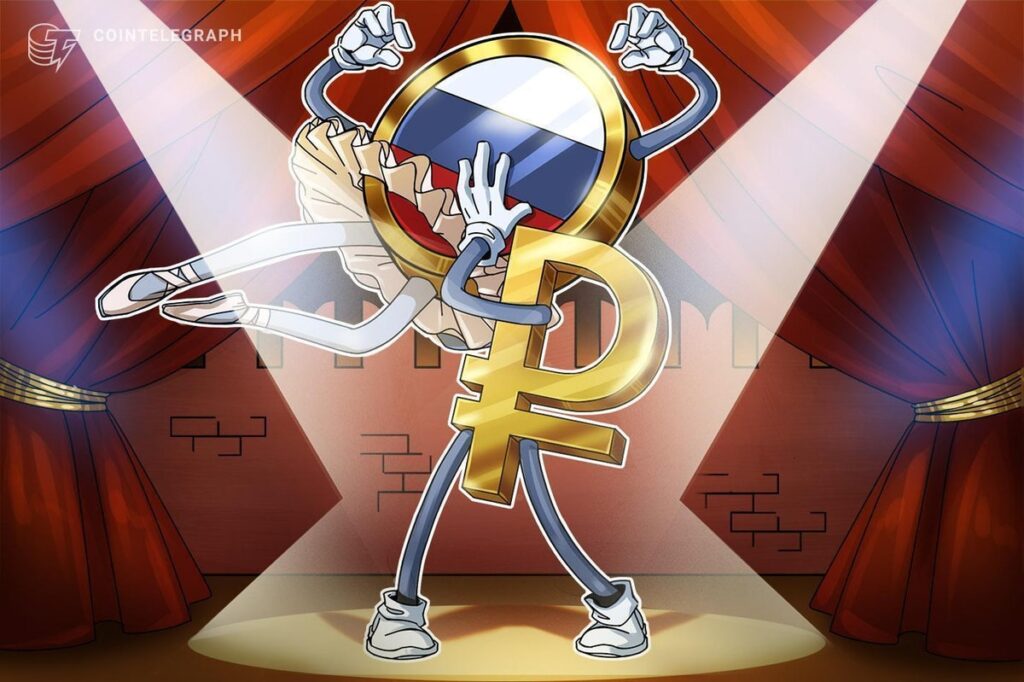The idea of a Russian ruble stablecoin acquired particular consideration at a significant native crypto occasion, the Blockchain Discussion board in Moscow, with key business executives reflecting on a number of the core encompasses a ruble-backed stablecoin may require.
Sergey Mendeleev, founding father of the digital settlement change Exved and inactive founding father of the sanctioned Garantex change, put ahead seven key standards for a possible “reproduction of Tether” in a keynote on the Blockchain Discussion board on April 23.
Mendeleev mentioned a possible ruble stablecoin should have untraceable transactions and permit transfers with out Know Your Customer (KYC) checks.
Nonetheless, as a result of one of many standards additionally requires the stablecoin to adjust to Russian rules, he expressed skepticism that such a product may emerge quickly.
The DAI mannequin praised
Mendeleev proposed {that a} potential Russian “Tether reproduction” should be overcollateralized equally to the Dai (DAI) stablecoin mannequin, a decentralized algorithmic stablecoin that maintains its one-to-one peg with the US greenback utilizing smart contracts.
“So, any one who buys it can perceive that the contract relies on the property that super-securitize it, not someplace on some unknown accounts, however free to be checked by easy crypto strategies,” he mentioned.
One other must-have function must be extra liquidity on each centralized and decentralized exchanges, Mendeleev mentioned, including that customers should be capable to change the stablecoin at any time they want.
In response to Mendeleev, a viable ruble-pegged stablecoin additionally wants to supply non-KYC transactions, so customers usually are not required to move their knowledge to begin utilizing it.
“The Russian ruble stablecoin ought to have the chance the place folks use it with out disclosing their knowledge,” he acknowledged.
Associated: Russia’s central bank, finance ministry to launch crypto exchange
Within the meantime, customers ought to be capable to earn interest on holding the stablecoin, Mendelev continued, including that providing this function is out there by way of sensible contracts.
Russia opts for centralization
Mendeleev additionally recommended {that a} potential Russian model of Tether’s USDt (USDT) would want to function untraceable and low cost transactions, whereas its sensible contracts shouldn’t allow blocks or freezes.
The ultimate criterion is {that a} potential ruble stablecoin must be regulated in accordance with the Russian laws, which at the moment doesn’t look promising, in line with Mendeleev.
“As soon as we put these seven factors collectively […] then it could be an actual various, which might assist us at the least compete with the options which might be at the moment in the marketplace,” he acknowledged on the convention, including:
“Sadly, from the standpoint of regulation, we’re at the moment going within the completely other way […] We’re going within the course of absolute centralization, not within the course of liberalization of legal guidelines, however consolidation of prohibitions.”
Potential options
Whereas the regulatory aspect is just not trying good, a possible Russian model of USDT is technically possible, Mendeleev informed Cointelegraph.
“Aside from nameless transactions, every little thing is straightforward to implement and has already been deployed by a number of initiatives, nevertheless it’s simply not unified in a single mission but,” he mentioned.
The crypto advocate particularly referred to fascinating alternatives by initiatives just like the ruble-pegged A7A5 stablecoin, unblockable contracts at DAI, and others.
Associated: Russian crypto exchange Mosca raided amid cash-to-crypto ban talks
Regulation is critical however not sufficient, Mendeleev mentioned, including that probably the most troublesome half is the belief of customers who should see the ruble stablecoin as a viable various to main options like USDT.
Current reviews recommend that the deputy head of Russia’s Finance Ministry’s monetary coverage division urged the government to develop ruble stablecoins.
Elsewhere, the Financial institution of Russia has continued to progress its central bank digital currency project, the digital ruble. In response to Finance Minister Anton Siluanov, the digital ruble is scheduled to be rolled out for business banks within the second half of 2025.
Journal: Bitcoin $100K hopes on ice, SBF’s mysterious prison move: Hodler’s Digest, April 20 – 26
